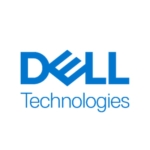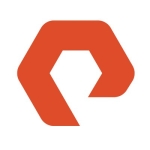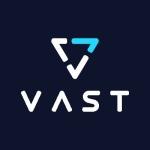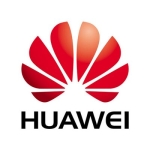What is our primary use case?
NetApp AFF is used to store all of our data.
We're a full Epic shop, and we 're running Epic on all of our AFFs. We also run Caché, Clarity Business Objects, and we love the SnapMirror technologies.
How has it helped my organization?
Prior to bringing in NetApp, we would do a lot of Commvault backups. We utilize Commvault, so we were just backing up the data that way, and recovering that way. Utilizing Snapshots and SnapMirror allows us to recover a lot faster. We use it on a daily basis to recover end-users' files that have been deleted. It's a great tool for that.
We use Workflow Automation. Latency is great on our right, although we do find that with AFF systems, and it may just be what we're doing with them, the read latency is a little bit higher than we would expect from SSDs.
With regard to the simplicity of data protection and data management, it's great. SnapMirror is a breeze to set up and to utilize SnapVault is the same way.
NetApp absolutely simplifies our IT operations by unifying data services.
The thin provisioning is great, and we have used it in lieu of purchasing additional storage. Talking about the storage efficiencies that we're getting, on VMware for instance, we are getting seven to one on some volumes, which is great.
NetApp has allowed us to move large amounts of data between data centers. We are migrating our data center from on-premises to a hosted data center, so we're utilizing this functionality all the time to move loads of data from one center to another. It has been a great tool for that.
Our application response time has absolutely improved. In terms of latency, before when we were running Epic Caché, the latency on our FAS was ten to fifteen milliseconds. Now, running off of the AFFs, we have perhaps one or two milliseconds, so it has greatly improved.
Whether our data center costs are reduced remains to be seen. We've always been told that solid-state is supposed to be cheaper and go down in price, but we haven't been able to see that at all. It's disappointing.
What is most valuable?
The most valuable features of this solution are SnapMirror and SnapVault. We are using SnapMirror in both of our data centers, and we're protecting our data with that. It is very easy to do. We are just beginning to utilize SnapVault.
We are using the AQuoS operating system, which allows us to get a lot more out of our AFF systems. It allows us to do storage tiering, which we love. You can also use the storage efficiencies to get a lot more data on the same platform.
What needs improvement?
The read latency is higher than we would expect from SSDs.
The quality of technical support has dwindled over time and needs to be improved.
What do I think about the stability of the solution?
This is a stable solution. We are running an eight-node cluster and the high availability, knowing that a node can go down and still be able to run the business, is great.
We do not worry about data loss. With Clustered Data ONTAP, we're able to have a NetApp Filer fail, and there is no concern with data loss. We're also using SnapMirror and SnapVault technology to protect our data, so we really don't have to worry.
What do I think about the scalability of the solution?
Scalability is pretty easy. We've done multiple head swaps in our environment to swap out the old with the new. It's awesome for that purpose.
How are customer service and technical support?
My experience with technical support is, as of late, the amount of expertise and what we're getting out of support has kind of dwindled a little bit. You could tell, the engineers that we talked to aren't as prepared or don't have the knowledge that they used to. We have a lot of difficulty with support.
The fact that NetApp's trying to automate the support with Elio is pretty bad, to be honest with you. In my experience, it just makes getting a hold of NetApp support that much more difficult, going through the Elio questions, and they never help so we end up just wasting minutes just clicking next and next, and let's just open a support case already, type thing. So it's been going downhill.
Which solution did I use previously and why did I switch?
Prior to this solution, we were running a NetApp 7-Mode implementation with twenty-four filers.
How was the initial setup?
We went from twenty-four 7-Mode filers to an eight-node cluster, so we've done a huge migration to cDOT. With the 7-Mode transition tool, it was a breeze.
What about the implementation team?
We use consultants to assist us with this solution. We do hire Professional Services with NetApp to do some implementations. The technicians that we have been getting on-site for those engagements have been dwindling in quality, just like the technical support. A lot of the techs that we used to get really knew a lot about the product and were able to answer a lot of our technical questions for deployment. One of the techs that we had recently does not know anything about the product. He knows how to deploy it but doesn't know enough to be able to answer some of the technical questions that we'd like to have answered before we deploy a product.
What other advice do I have?
We are looking at implementing SnapCenter, which gives us one pane of glass to utilize snapshots in different ways, especially to protect our databases.
I used to work on EMC, and particularly, the VNX product. They had storage tiering then, and when I came onboard to my new company, they ran 7-Mode and didn't have a lot of storage tiering. It was kind of interesting to see NetApp's transition to storage tiering, with cDOT, and I really liked that transition. So, my experience overall with NetApp has been great and the product is really great.
I think some of the advertisements for some of the products, that can really help us, is kind of poor. The marketing for some of the products is poor. We were recently looking at HCI, and we really didn't have a lot of information on HCI, prior to its deployment. It was just given to us and a lot of the information concerning what it was and how it was going to help wasn't really there. I had to take a couple of Element OS classes, in order to find out about the product and get that additional info, which I think, marketing that product, would have helped with a lot better.
My advice to anybody who is researching this type of solution is to do your research. Do bake-offs, as we do between products, just to make sure that you are getting the best product for what you are trying to do.
I would rate this solution a nine out of ten.
Which deployment model are you using for this solution?
On-premises
Disclosure: My company does not have a business relationship with this vendor other than being a customer.











